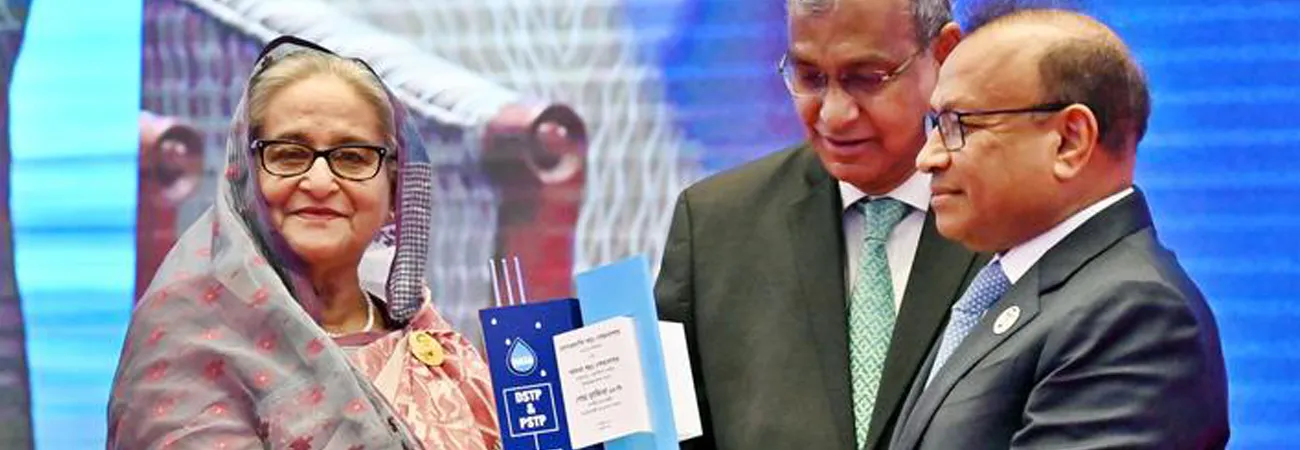XINHUA-PAKISTAN SERVICE
By Muhammad Zamir Assadi
Pakistan, an all-weather friend of China and major country involved in the Belt and Road Initiative, has formally announced the use of Chinese yuan (CNY) for bilateral trade, financial transactions and investment activities including imports and exports.
According to the comprehensive policy announced by the State Bank of Pakistan, public and private enterprises on both sides are given a green light as all financial activities can be denominated in CNY per mutual consent.
This step taken by Pakistan shows that measures for the internationalization of CNY adopted by China, the world's second largest economy, are gaining more support and trust in the international community, encouraging the use of Chinese currency in trade activities.
The internationalization of Chinese currency, accelerated in 2009 following the establishment of the dim sum bond marketby China, has been actively gaining trust for trade and financial transactions in CNY.
The number of countries using CNY as a trade currency replacing or serving as an alternative to the US dollar is also increasing, with the BRI paving the way in its fifth year for infrastructural development in dozens of countries.
China's opening-up policies and deepening of economic reforms have also convinced the International Monetary Fund to add CNY to the special drawing rights basket following the US dollar, Japanese yen and euro.
This decision has pushed forward efforts to turn CNY into a global trade monetary unit by pushing back US dollars.
Such announcements are also expected by oil producing countries, following their big allocation of oil exports to China by negating US dollars in clearing their bills.
The increasing trend of using CNY by various countries in bilateral trade is a clear signal that the yuan, also known as the renminbi, is growing as a stable and viable currency that may be trusted for economic activities.
As far as the decision of Pakistan is concerned, it shows the country has geared up all its efforts to cultivate economic benefits in regional and international economic development.
The increasing bilateral trade between Pakistan and China and the volume of investments under the China-Pakistan Economic Corridor (CPEC), which has reached $57 billion, has opened up possibilities for replacing US dollars with CNY in bilateral trade.
CPEC, a flagship project of BRI, will link the southwestern port city of Gwadar in Baluchistan province with the western region of China.
The decision will make way for the simplification of all CPEC projects as the long-term plan for this economic corridor has also been announced with the mutual consent of Pakistani and Chinese authorities in September 2017.
The long-term plan will deepen the long-term strategic and economic relationship between the two countries by pushing forward CPEC. At the same time, it will attract other countries to invest in the corridor based on generating economic prosperity not only for Pakistan but also the whole region.
The utilization of CNY under CPEC will also encourage other countries to participate in this socioeconomic partnership, which is already tackling various shortcomings in Pakistani sectors including energy, railways and infrastructure.
The regulatory framework announced by the central bank of Pakistan is based on helping and settling bilateral trade in terms of expanding financial and economic cooperation. This will also ease pressure on the country's foreign exchange reserves.
This economically beneficial decision by the Pakistani government is considered an additional option for tackling low foreign exchange reserves, and will certainly provide relief to the economy as well as improve the economic indicators.
The equation of the Pakistani rupee and Chinese yuan settlement has become significant in trade affairs with China, as Pakistani imports from China have also exceeded $10 billion.
It is estimated that Pakistan's payment of import bills in yuan will gradually decrease its dependence on US dollars.
The development has led to predictions that Pakistan's foreign exchange reserves will be accumulating mostly with CNY in the coming years.
Recently, Pakistani currency was devalued against the US dollar to a current rate of 111 rupees to $1, but the situation will be changed with the passage of time.
By practically implementing the rupee-yuan settlement, the currency devaluation may stop with increasing bilateral trade between the two countries and the enhancement of investments in CPEC projects.
The solid measures by both countries in the bilateral currency exchange and its usage in trade activities would also facilitate the free flow of capital and legitimate funds in both countries.
Muhammad Zamir Assadi is a Pakistani journalist writing on various international issues. He was also a China-South Asia and South East Asia press center media fellow for 2017.The author may be reached at zamirasadi@gmail.com
China Daily





